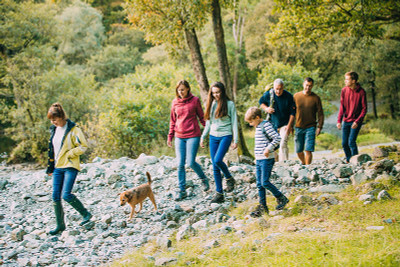Posted by Zena Conkey on Jul 16, 2020
In the UK, we are lucky to have as many as fifteen National Parks at our dog’s paws. From dramatic coastlines to breath-taking lochs, even towering forests harbouring tales of bygone eras – we can think of few better places to explore with our four-legged friends.
Every year, National Parks celebrates these majestic landscapes. So, if you have an eye for intrepid exploration, why not pack your pal’s favourite treats and head off for a few dog days of summer in Britain’s great outdoors.
Time will tell which secluded spots they can sniff out.
Six Adventurous Activities for your Dog and Family to Enjoy
National Park Week falls at the height of summer meaning sun-filled days guaranteeing hours of fun; with such a variety of settings to discover, why not plan an entire week of exploration to make the most of this unique event?
Take to the Waters: Canoe with Your Canine
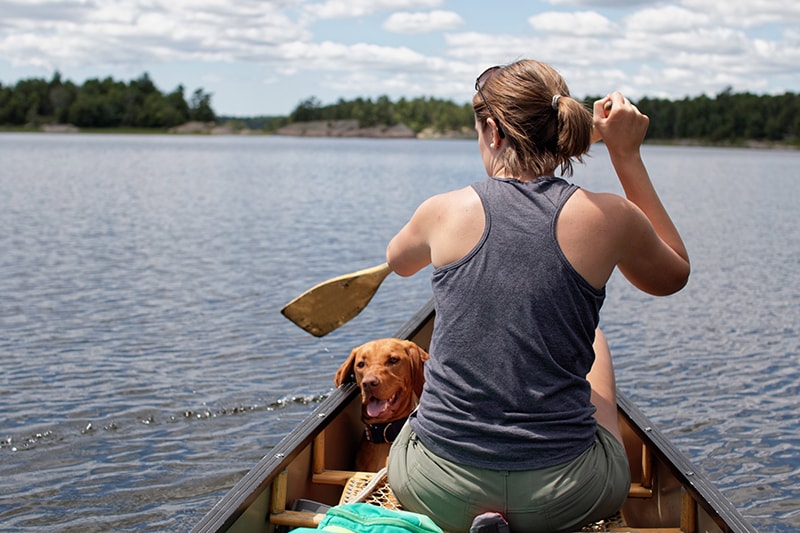
There are few better ways to bond with the family than a day on the water: the proximity with nature; the teamwork of the paddle – it makes for many-a-memorable moments. Plus, most dogs feel at home near the water, so they should be comfortable jumping into a kayak.
Plus, if the sun gets too hot, there’s the biggest paddling pool they’ve ever seen to cool off in.
We recommend you become a confident canoeist first, before taking the dog out in tandem; while a life-jacket for all (yes – we mean everyone!) is the perfect ‘better safe than sorry’ option and the Ruffwear Float Coat is a great look when on four legs.
It’s probably best to wait until your dog is well-enough trained so they ‘sit,’ ‘go flat,’ or ‘wait’ on command, as this is often the only way to avoid an untimely capsize.
Also, try to keep barking under control. The lakes attract an array of wildlife, so you can expect to spot a fantastic variety of animals provided there’s nothing to disturb the peace. A run before hopping into the canoe can cure over-excitement, prepping the pack for downtime – while a few throws of a Hydro-plane Toy will quickly resolve boredom.
Traverse the Hills: Days are for Hiking
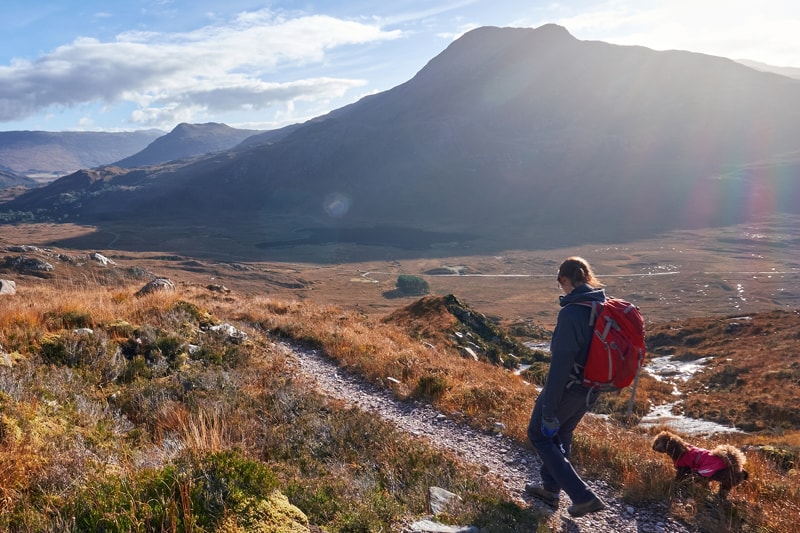
Hiking is the best medicine: the great outdoors, time with loved-ones and endless green space; it doesn’t get much better. Plus, every dog loves a long walk – just be sure to know your route and do your best to avoid livestock!
To prepare your buddy for extended hikes, take a few longer walks closer to home and – only once comfortable with the level of exercise – graduate to a full day out. Shorter walks help toughen the paws, preventing injury when on rougher terrain, while you can always buy Grip Trex Boots if extra protection is needed.
You might also want to use the strolls to introduce an Approach Backpack; as once accustomed to carrying a small load – no more than 25% of the dog’s weight – you’ll be relieved to have a four-legged Sherpa lugging a few small items up the hill; say, their Quencher Water Bowl, for example.
The water bowl is the vital bit of equipment as your dog must stay hydrated. Then, when it comes to feeding, consider upping the daily amount but feed little and often; rather than fewer large meals.
Once the day is out, check all four legs for blemishes as well as following the below routine:
Eyes – for seeds.
Ears – for mites.
Paws – for damage.
Tail – for who knows what gets caught in there!
Then, run your hand through their fur for other nasties, and gives mouths and gums the once-over for cuts or sores.
Nights Under the Stars: Camping with Dogs
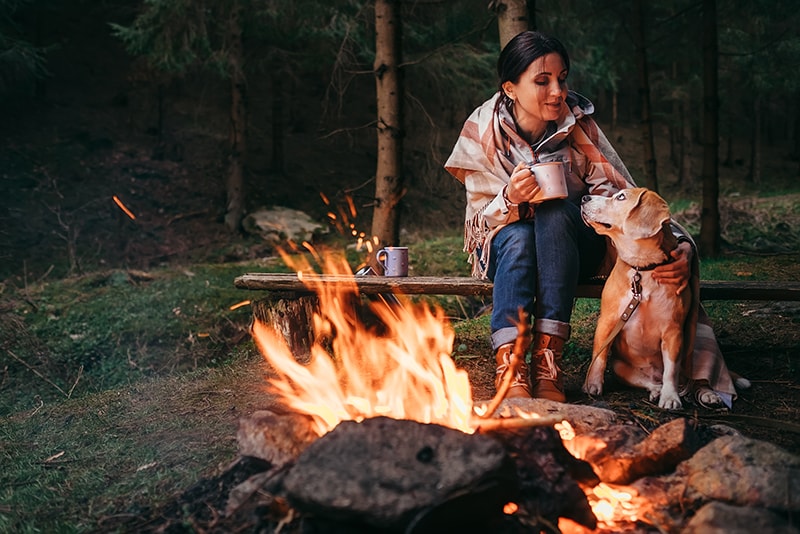
Many parks have incredible camping facilities; plus, it’s a beautiful end to a hike. Just be aware your dog might need time to settle into a new routine.
While they love the outdoors, camping is a different beast.
The quickest way to settle a restless dog is a comfy bed. The Ruffwear Highlands Sleeping Bag offers ultimate cosiness and could be the saving grace as you settle in for the night. If the rascal just won’t calm, then there’s always the option of a Knot-a-Hitch giving the dog freedom to roam and you the peace of mind they can’t wander off.
Then, when the time comes to raise them from a night’s slumber, a rustle from a Kibble Carrier will rouse even the sleepiest of pups – energising them for another day on the trails.
Pets Can Cycle, Too!
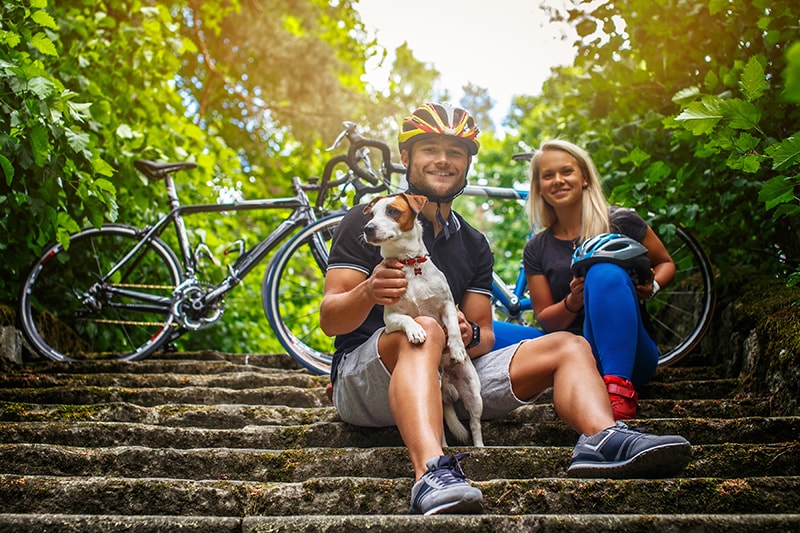
Often, people don’t consider taking their canine friend on a bike ride; but with the array of cycle paths dotted around National Parks, it can be the perfect way to tire a restless dog.
With the right gear to guarantee their safety – your route carefully plotted out – get pedalling for a few hours of speedy fun as your pal jogs along behind. Perhaps the most critical item for a day behind the bike is the right lead attachment; the Walkydog Plus Bike Leash Attachment is the perfect solution.
It’s also best to find a path where your dog can run alongside the concrete on softer ground and always start with a few slower cycles to help them get into the rhythm. And remember: dogs do tire – so, take a Water Bottle and offer them a cooling sip on hot July days.
Finally, be wary of distractions: another dog, a squirrel, even an inquisitive passer-by. They can cause your dog to stop suddenly, and you don’t want to risk a sudden jolt. When you do come to a stop, shower them with praise, so they know they’ve been the best boy or girl in the park!
The Trail Runner’s Guide to Dogs
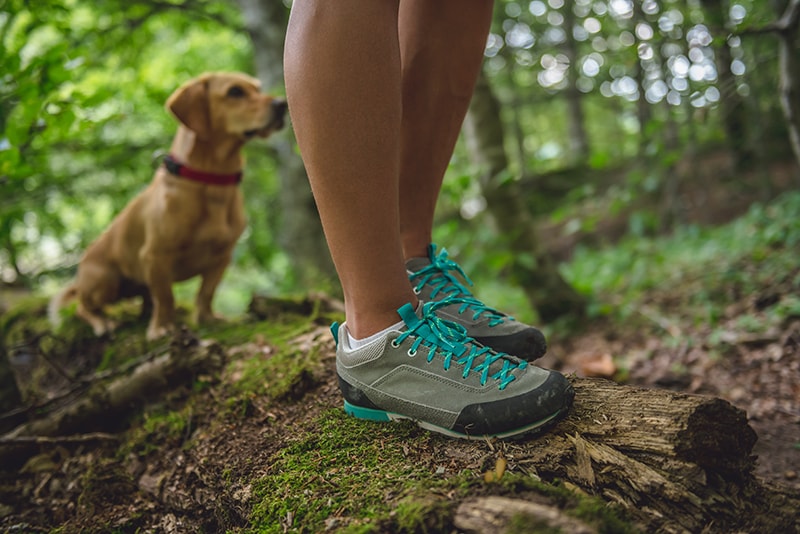
If a bike ride seems a pedal too far, then trail running could be the best next thing; provided your pal can handle the mileage. A day out blazing trails can be a hugely rewarding exercise for the both of you.
As with cycling, dogs can become overtired, but will not necessarily show signs of their weariness. Keep checking they are running comfortably, ease them in with a few shorter jogs, and the moment four legs trail two – you know it’s time to stop.
A Trail Running Belt makes life manageable as you can attach any lead to your midriff without having to compromise on your own essentials; think music player, water bottle or snack. More importantly, a collapsible Trail Runner Bowl fits snuggly inside, guaranteeing your dog remains hydrated, no matter where the trails lead you.
Dogs can also overheat, meaning regular breaks are essential: keep an eye on the colour of their urine or if their skin becomes hot. If ever in doubt, take a time-out – you’ll both be glad of the rest!
Liven Up Park Exploration with Geocaching
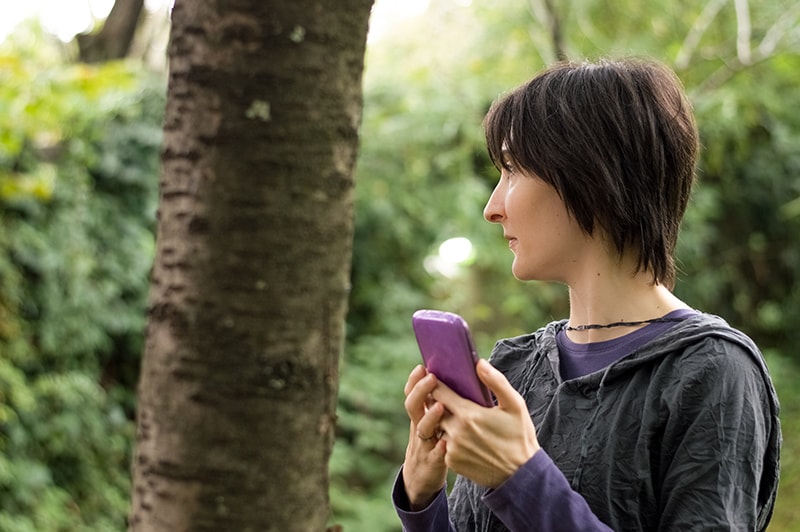
National Park Week is fun-filled as it is, but we all enjoy the added excitement of a treasure hunt. Geocaching is the perfect way to spur on the troops as age and species matter little; the entire family will love this community-oriented adventure.
Geocaching involves searching for hidden boxes in which other participants have hidden items for the next players to uncover: stamps, notebooks, treats – every box includes a different surprise, which is what makes the experience so entertaining.
Users log into a smartphone app, or purchase a GPS, then head out for the hunt; if your buddy has an unusually keen sense of smell, why not rely on their cache-sniffing abilities?
The Hurtta Treat Pocket Eco means treats are easily accessed should the four-legged maestro unearth a hidden box, while further pockets stash poop-bag essentials alongside the obligatory mobile phone – if this isn’t your geocaching search-device-of-choice.
And woe-betide, even in July, it rains; but a Hase Rain Jacket is all that’s needed to protect the most important member of the family from catching a cold.
The Countryside Code: 6 Rules You Must Respect
Before venturing into the parks, appreciate the rules of the outdoors: for they preserve the year-around idyll and ensure other countryside users – animal and human, alike – can enjoy the same natural bounty.
- Always keep your dog under control, especially near farm animals or wildlife, and take note; sheep are particularly sensitive to disturbance.
- Between 1st March and 31st July, dogs must be kept on a lead on certain common land; or, year-around when near livestock (some areas ban dogs outright, so check for signs!).
- Dogs can be off-lead on paths, provided they remain under control; if prone to running off or disturbing animals, a lead is always best. Remember: farmers reserve the right to ‘take action’ against dogs who are out of control near livestock, so be warned.
- If a farm animal does chase you, let your dog off the lead – never risk both your lives in trying to protect your pet.
- Better yet: avoid disturbing wildlife at all costs!
- Finally, clean it up: dog mess harbours parasites and infections, among other more obvious unpleasantness. Respect your surrounds and allow others to enjoy them, mess-free.
We know our four-legged friends cannot wait for National Parks Week; as always, let us know what exciting activities you have planned!
